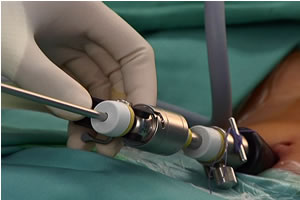Article on UKM R&D in Reader’s Digest Frontiers of Knowledge Supplement, September 2012
Universiti Kebangsaan Malaysia
Research at Universiti Kebangsaan Malaysia (UKM) is marked by an audacious quest to constantly push boundaries and the recognition that strength follows from focus.
“It’s impossible to excel in all fields, so we build niche areas in which we can attain a leadership position,” says Prof. Dato’ Dr Rahmah Mohamed, a molecular biologist and deputy vice chancellor of research and innovation. “We align our research to national priorities and global challenges.”
UKM has eight niche areas: nation building, regional sustainable development, renewable energy, health technology and medicine, climate change; nanotechnology and advanced materials, biodiversity for biotechnology development, and content-based informatics. These niche areas embrace 24 research clusters, 189 research groups and 2000 academics.
“We stand out through our multi-disciplinary approach – we harness expertise from various disciplines and address research challenges in a holistic manner,” notes Rahmah.
UKM ranks 98th on the 2012 Times Higher Education list of Top Universities Under 50 Years and is the only Malaysian university to place in the 2012 QS Top 50 Universities Under 50 Years. It stands 58th in the overall 2012 QS Asian University Rankings.
Prof. Dr Muhammad Yunus, winner of the 2006 Nobel Peace Prize for his research into eradicating poverty through microcredit to Bangladesh’s poor, is Laureate-in-Residence and provides mentoring to faculty and students.
“These achievements reflect the enormous progress we have made in our 42 years,” says Rahmah. “Twenty years ago, we were known primarily as an undergraduate university; today our researchers attract substantial funding from national sources as well as from abroad, including Europe, Japan and the US.”
UKM’s innovative approach to learning includes its seven Living Lab research stations where projects aim to conserve biodiversity and local communities, explains Rahmah. Sites include the Bangi Permanent Forest Reserve at UKM’s doorstep, Mersing Marine Park in Johor, Fraser’s Hill, the Langkawi Geopark and Tasik Chini in Pahang, Malaysia’s second largest freshwater wetland and a UNESCO Biosphere Reserve.
UKM has a number of specialist projects which further raise its profile in the international arena.


“Replacing fossil fuels with renewable sources like solar energy is imperative as we battle pollution and global warming,” explains Prof. Dato’ Dr Kamaruzzaman Sopian, director of the Solar Energy Research Institute, which has a sophisticated research park to study ways to increase the efficiency of solar energy collection and transmission.
In tissue engineering, researchers will soon conduct the first clinical trial of Kulitku, a breakthrough construct to treat skin injuries such as those caused by major accidents and burns. Traditional skin grafts risk infection and scarring, and may not be advisable for patients with significant skin damage or weak healing abilities.
“With this new approach, we take a small piece of skin from a healthy part of the patient’s body, engineer a piece of skin some 30 times larger, then graft it on to the wound,” explains Dr Ruszymah bt Hj Idrus, a professor of human physiology who leads the project. “This method provides a full-thickness skin and eliminates the risk of immune system rejection and cross contamination.”
Also on the health technology front, UKM’s genome sequence research in collaboration with the Malaysia Genome Institute and the University of Sheffield of the UK has identified the toxic protein present in Burkholderia pseudomallei, the bacterium that causes the tropical infectious disease meliodosis, which has claimed the lives of several Malaysians working in wet muddy areas in recent years.
“Now that the toxin is identified, it may be possible to fight this deadly disease more effectively,” says Rahmah, who heads the Malaysian research team. “This finding shows how applying modern tools in tandem with skills in genomics, molecular biology and biochemistry can provide new insights into a disease.”
![]()

